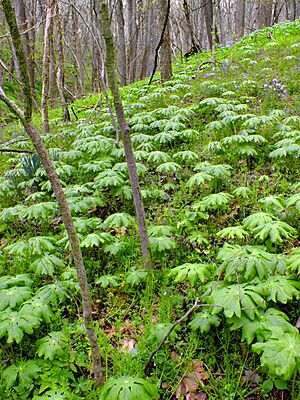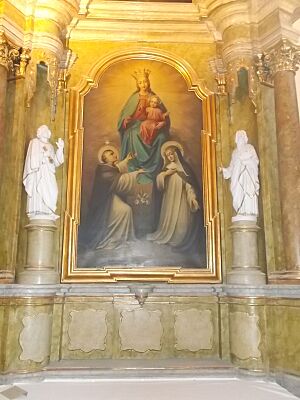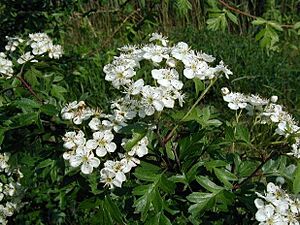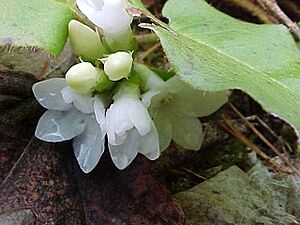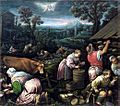May facts for kids
May is the fifth month of the year in both the Julian and Gregorian calendars. It has 31 days.
In the Northern Hemisphere, May is a spring month. But in the Southern Hemisphere, it's an autumn month. This means May in the Southern Hemisphere feels like November in the Northern Hemisphere. In the United States and Canada, late May often marks the start of summer vacation, usually ending around Labour Day in September.
The name May comes from the Latin word Maius. It was named after Maia, a Greek goddess who was also linked to the Roman era goddess of fertility, Bona Dea. Her special festival was held in May. Another idea, from the Roman poet Ovid, is that May was named for the maiores, meaning "elders," while June was named for the iuniores, or "young people."
Did you know that Eta Aquariids meteor shower happens in May? You can usually see it from April 21 to May 20, with the most meteors appearing around May 6. Other meteor showers like the Arietids and Virginids also occur in May.
Contents
What May Means
Symbols of May
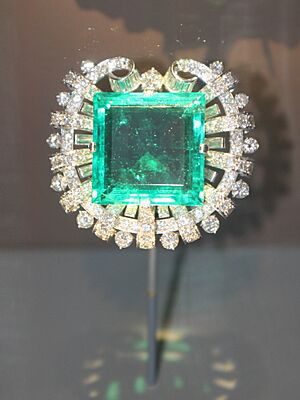
May's special birthstone is the emerald. This beautiful green gem represents love and success.
The birth flowers for May are the Lily of the Valley and the Hawthorn. Both of these flowers grow naturally in cool parts of the Northern Hemisphere, like Asia and Europe. They also grow in the southern Appalachian Mountains in the United States.
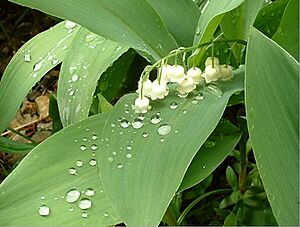
The "Mayflower," also known as Epigaea repens, is a plant that signals the arrival of May in North America. It's the official flower of Nova Scotia in Canada and Massachusetts in the United States.
The zodiac signs for May are Taurus (for those born until May 20) and Gemini (for those born from May 21 onwards).
Special Events and Observances in May
May is a month filled with many different observances and celebrations around the world.
Month-Long Observances
Many groups use May to raise awareness for important causes or celebrate specific themes:
- Better Hearing and Speech Month: Focuses on helping people with hearing and speech challenges.
- Mental Health Awareness Month: Encourages understanding and support for mental well-being.
- Cystic Fibrosis Awareness Month: Helps educate people about this genetic disease.
- Asian American and Pacific Islander Heritage Month (United States): Celebrates the history and contributions of Asian Americans and Pacific Islanders.
- National Military Appreciation Month (United States): Honors the service and sacrifices of military members.
- National Pet Month (United Kingdom): Celebrates pets and responsible pet ownership.
- National Smile Month (United Kingdom): Promotes good oral health.
- Month of the Blessed Virgin Mary (Catholic tradition): A time for special prayers and devotions to Mary.
Movable Observances
Some holidays in May change their date each year, often based on a specific day of the week or in relation to Easter.
Important Movable Dates
- Mother's Day (First or Second Sunday in May): A day to celebrate mothers and mother figures in many countries, including the United States, Canada, Australia, and most of Europe.
- International Migratory Bird Day (Second Saturday in May): Highlights the amazing journeys of migratory birds and the need to protect them.
- Armed Forces Day (United States) (Third Saturday in May): Honors all branches of the U.S. military.
- Memorial Day (Last Monday in May, United States): A public holiday to remember and honor military personnel who died while serving their country.
- Victoria Day (Last Monday preceding May 25, Canada): A public holiday celebrating Queen Victoria's birthday and marking the unofficial start of summer.
Fixed Observances
Many holidays and special days in May happen on the same date every year.
- May 1
- May Day: Celebrated in many countries as a spring festival or International Workers' Day, honoring workers' rights.
- Beltane (Ireland, Neopaganism): An ancient Celtic festival marking the beginning of summer.
- May 3
- World Press Freedom Day: A day to promote and defend freedom of the press around the world.
- May 4
- Star Wars Day: A fun day for fans of the Star Wars movies, based on the phrase "May the Fourth be with you."
- May 5
- Cinco de Mayo: Celebrated in Mexico and the United States, commemorating the Mexican army's victory over the French in 1862.
- Children's Day (Japan, Korea): A day to celebrate children and their happiness.
- May 8
- World Red Cross and Red Crescent Day: Honors the work of the Red Cross and Red Crescent societies in helping people.
- VE Day (Western Europe): Celebrates the end of World War II in Europe in 1945.
- May 9
- Victory Day (Eastern Europe, Russia): Celebrates the Soviet Union's victory over Nazi Germany in World War II.
- May 12
- International Nurses Day: Honors the important work of nurses worldwide.
- May 15
- International Day of Families: Promotes awareness of issues relating to families and their well-being.
- May 17
- Norwegian Constitution Day: Celebrates Norway's constitution.
- May 18
- International Museum Day: A day to celebrate museums and their role in society.
- May 20
- Independence Day, East Timor: Celebrates East Timor's independence.
- May 22
- International Day for Biological Diversity: Raises awareness about protecting the variety of life on Earth.
- May 23
- World Turtle Day: Promotes protecting turtles and tortoises.
- May 24
- Saints Cyril and Methodius Day (Eastern Orthodox Church): Honors the creators of the Cyrillic alphabet.
- May 25
- Africa Day: Celebrates the founding of the Organisation of African Unity (now the African Union).
- Geek Pride Day: A day to celebrate all things "geeky" and nerdy.
- International Missing Children's Day: Raises awareness about missing children.
- May 29
- International Day of United Nations Peacekeepers: Honors those who serve in UN peacekeeping missions.
- May 31
- World No Tobacco Day: A global campaign to raise awareness about the dangers of tobacco.
Images for kids
-
May, from the Très Riches Heures du Duc de Berry, a famous medieval book.
See also
 In Spanish: Mayo para niños
In Spanish: Mayo para niños


